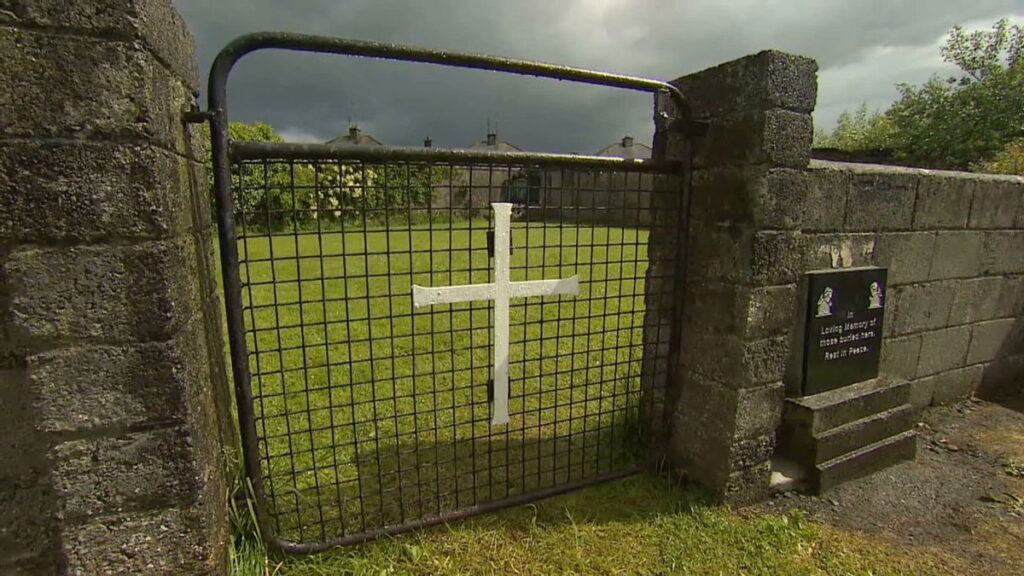
After years of public pressure and legal preparation, a forensic excavation has officially begun at the grounds of the former Bon Secours Mother and Baby Home in Tuam, County Galway. Authorities anticipate recovering the remains of up to 796 infants and young children who died between 1925 and 1961.
The site gained international attention following revelations in 2014 that death records for hundreds of children had no corresponding burial documentation. Many are believed to have been buried in an underground structure formerly part of the home’s sanitation system—a discovery that cast a stark light on Ireland’s treatment of unmarried mothers and their children during much of the 20th century.
A System of Secrecy and Stigma
The Tuam Mother and Baby Home operated under the management of the Bon Secours Sisters, a Catholic religious order, and housed women who became pregnant outside of marriage—a status that carried severe social stigma in mid-20th-century Ireland. These women were often placed in institutional care under pressure from families, local clergy, or social workers, and were typically required to perform unpaid labour while separated from their babies.
Conditions inside such homes were frequently overcrowded and underfunded. Infants died from a range of preventable causes, including malnutrition, neglect, and untreated illness. In Tuam, the mortality rate among children during certain years was reportedly double the national average.
While some children were adopted—many sent abroad, particularly to the United States—others vanished without clear explanation, fueling decades of unanswered questions for surviving families.
From Discovery to Action
Local historian Catherine Corless was instrumental in bringing the Tuam story to national attention. Her research into publicly available death certificates revealed that 796 children had died at the home, but only two could be traced to known burial sites. Following Corless’s findings, a 2017 state-commissioned investigation confirmed the presence of juvenile human remains in at least 20 chambers of what appeared to be a former sewage containment system on the property.
The government faced immediate calls for action, not only to exhume the remains, but to formally acknowledge the abuses of the past. In 2021, a five-year investigation by the Mother and Baby Homes Commission of Investigation found that nearly 9,000 children had ”died” across 18 such institutions in Ireland. The report described conditions as “harsh,” with many women subjected to emotional trauma, forced adoptions, and lifelong shame.
The Taoiseach at the time issued a public apology, acknowledging the state’s role in a system that prioritised “institutional and religious conformity over individual dignity and compassion.” A redress scheme was introduced, though many survivors criticised the process as insufficient.
A Forensic Effort Toward Justice
The current excavation, overseen by the Director of Authorised Intervention, follows recent legislation designed to allow recovery, analysis, and respectful reburial of human remains at the Tuam site. Work began in mid-2025 and is expected to continue for up to two years. Forensic anthropologists and genetic specialists will attempt to extract DNA to match with living relatives—an emotionally charged and technically complex process.
In addition to exhumation, the project will include the creation of a permanent memorial at the site and ongoing psychological support for affected families.
While the Bon Secours Sisters issued a formal apology in 2023 for the “failures of care” in Tuam, the order has not provided full access to its historical archives. Survivor groups continue to demand broader transparency and accountability from both religious institutions and the Irish state.
National and International Significance
The Tuam excavation is being closely watched not only in Ireland, but by international human rights observers, many of whom consider it a landmark moment in confronting state-sanctioned religious abuse. The site has come to symbolise broader questions around historical memory, justice, and the rights of children and women in institutional settings.
In the words of one state official involved in the intervention: “What we are undertaking now is not simply a recovery of remains—it is a recovery of truth, of dignity, and of collective responsibility.”
As Ireland moves to uncover its past, the hope for many is that Tuam becomes a turning point—not just in terms of acknowledgement, but in fostering a culture of accountability, empathy, and enduring remembrance.





